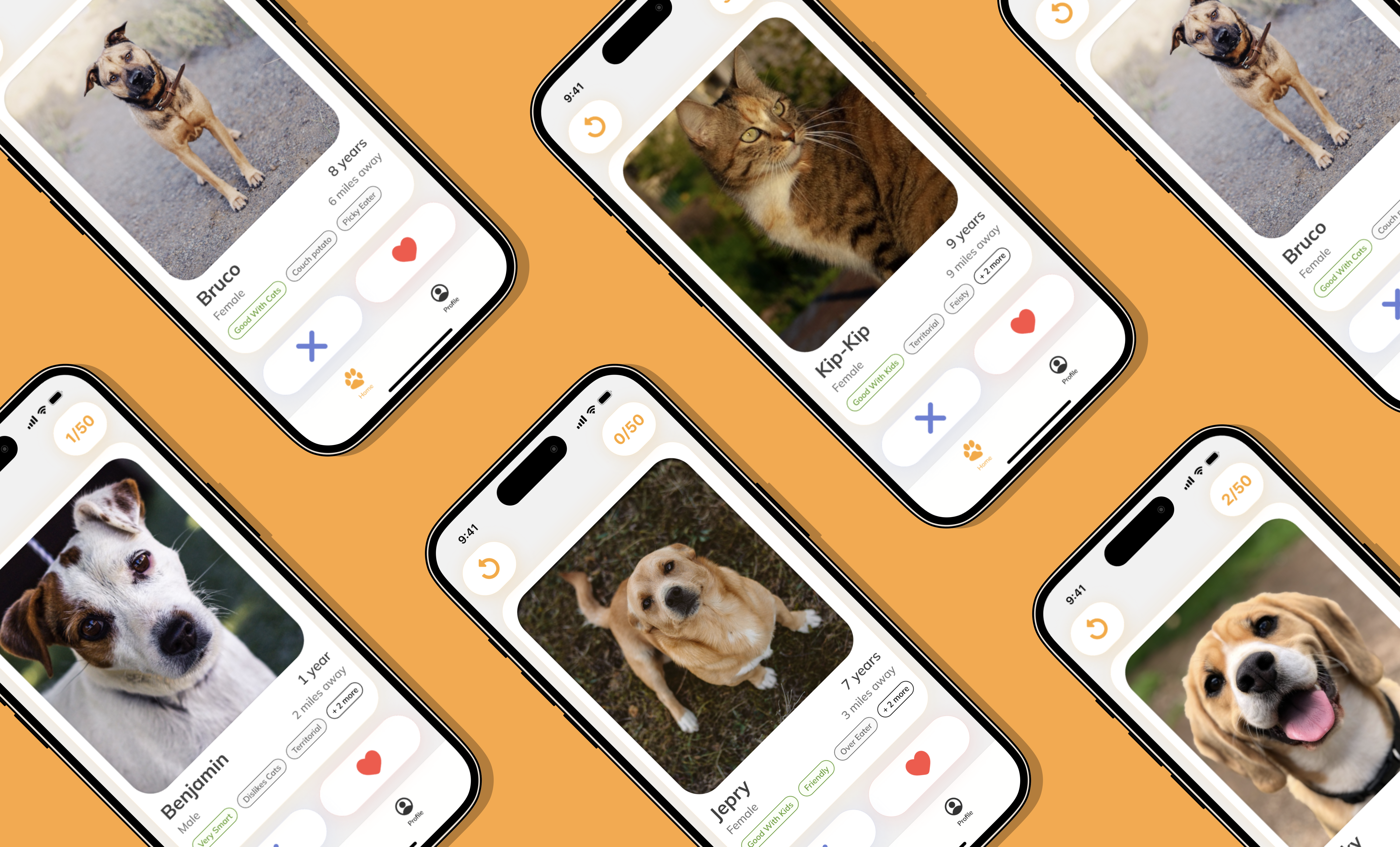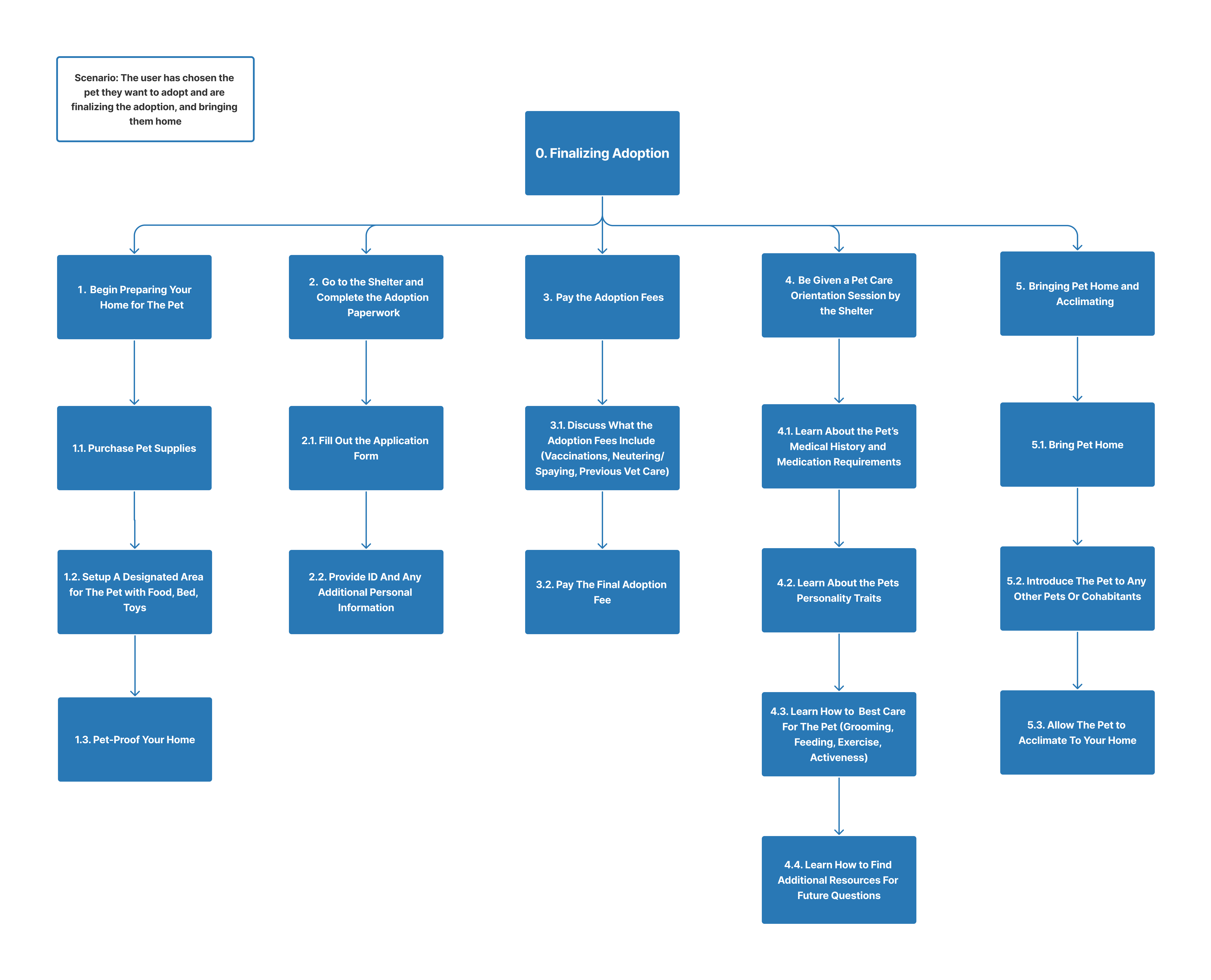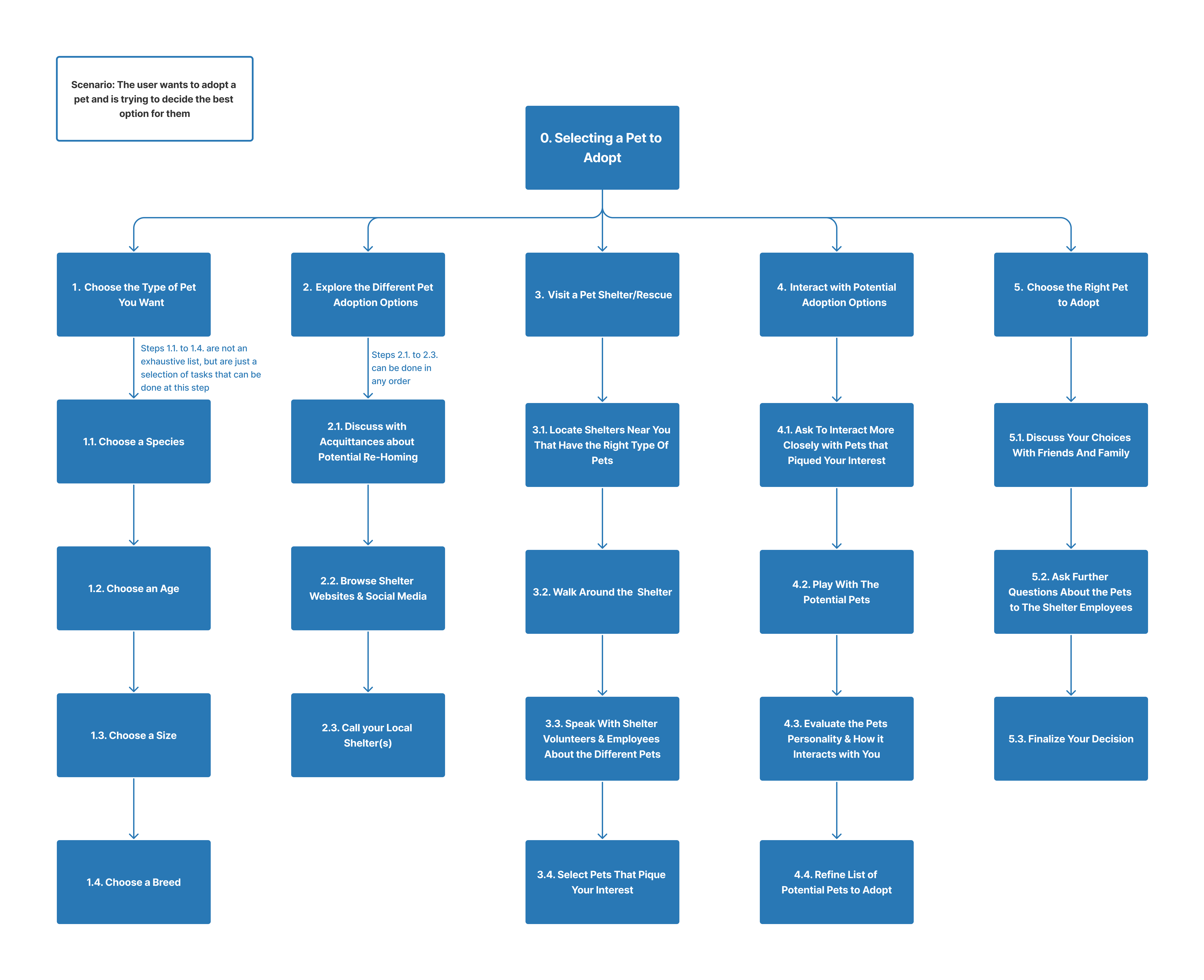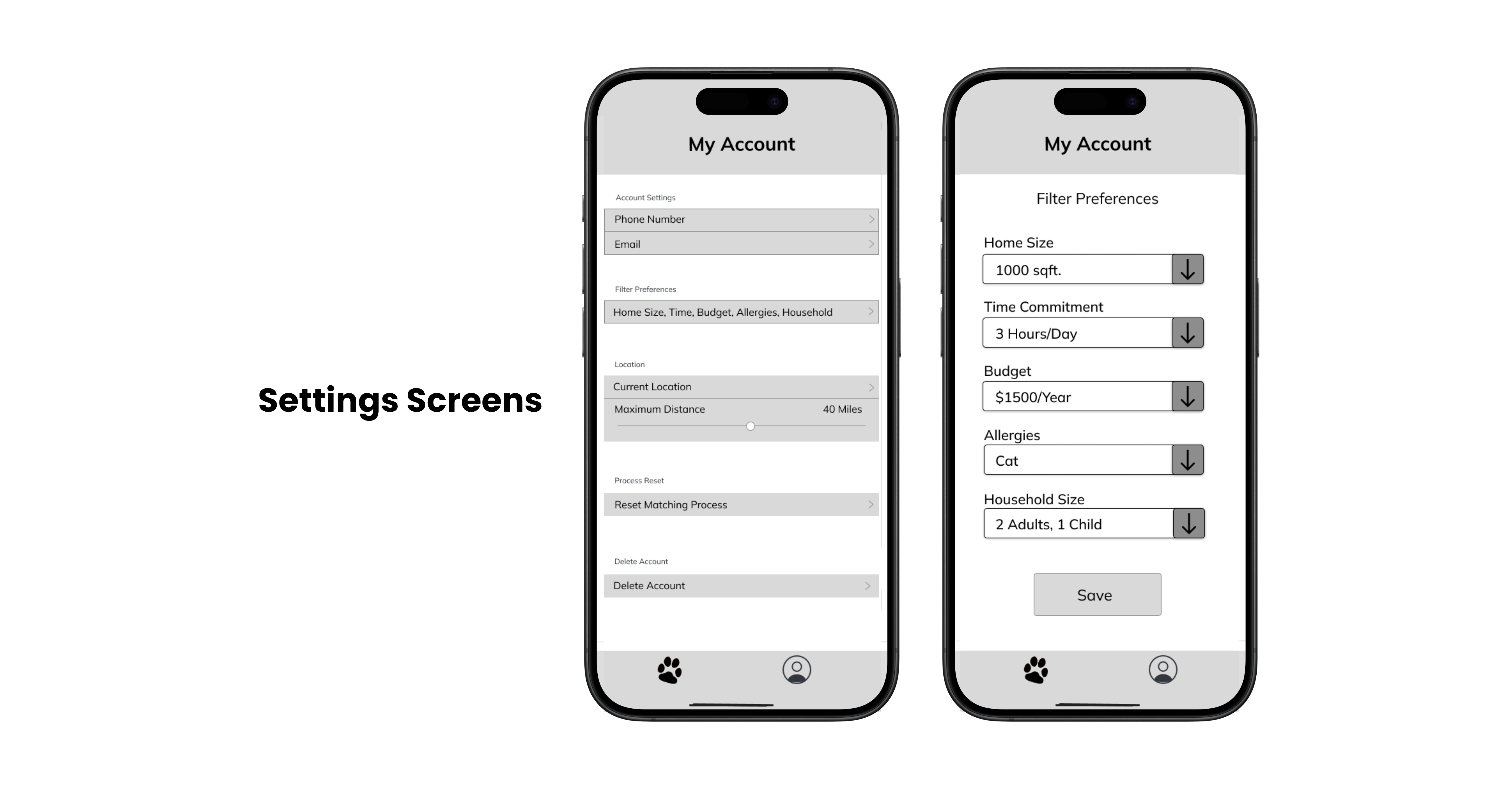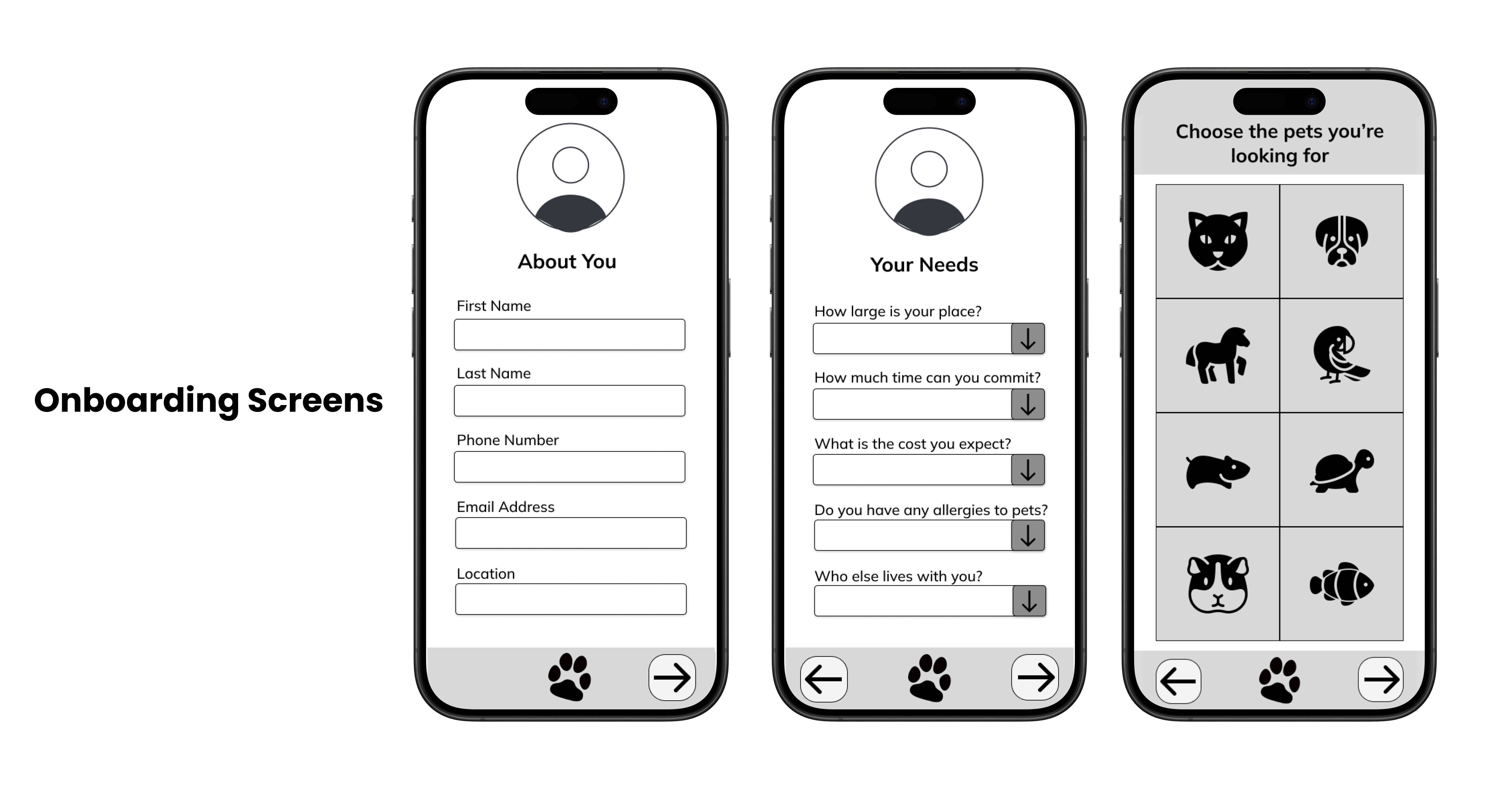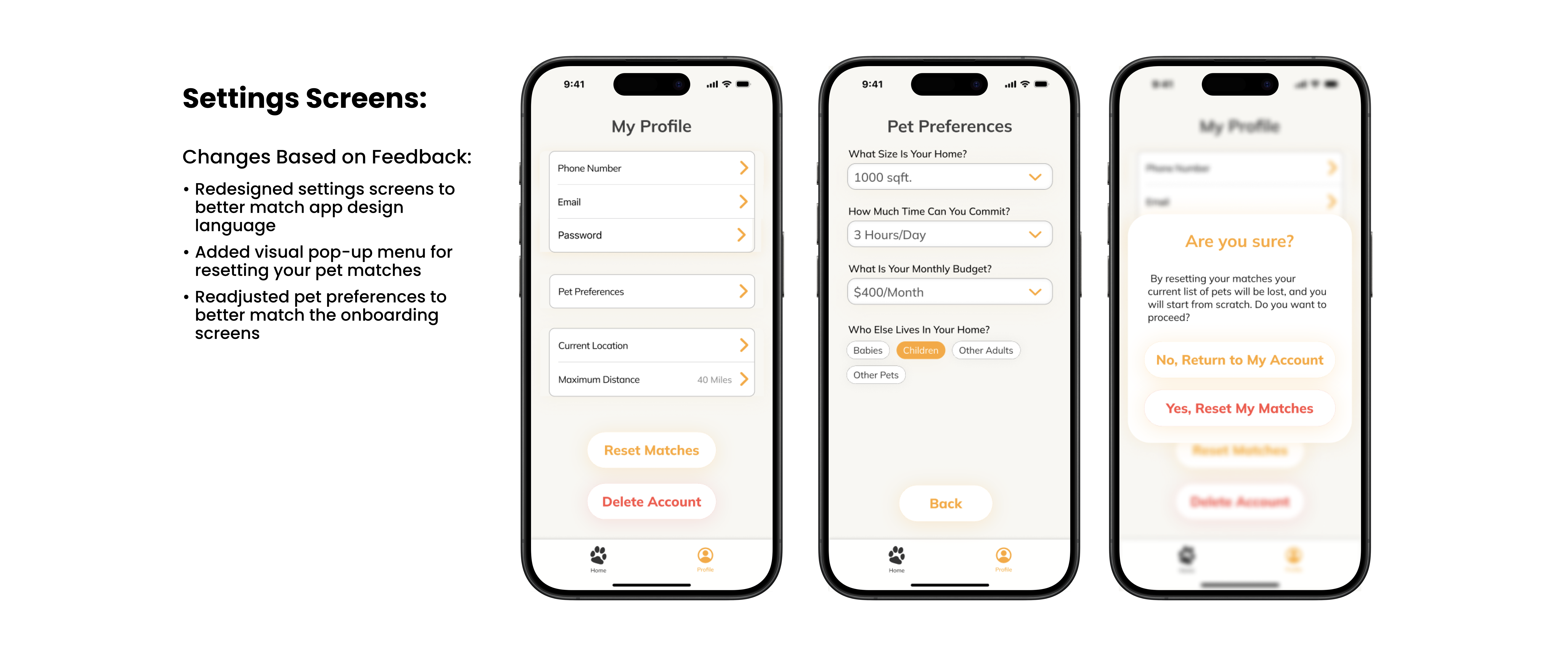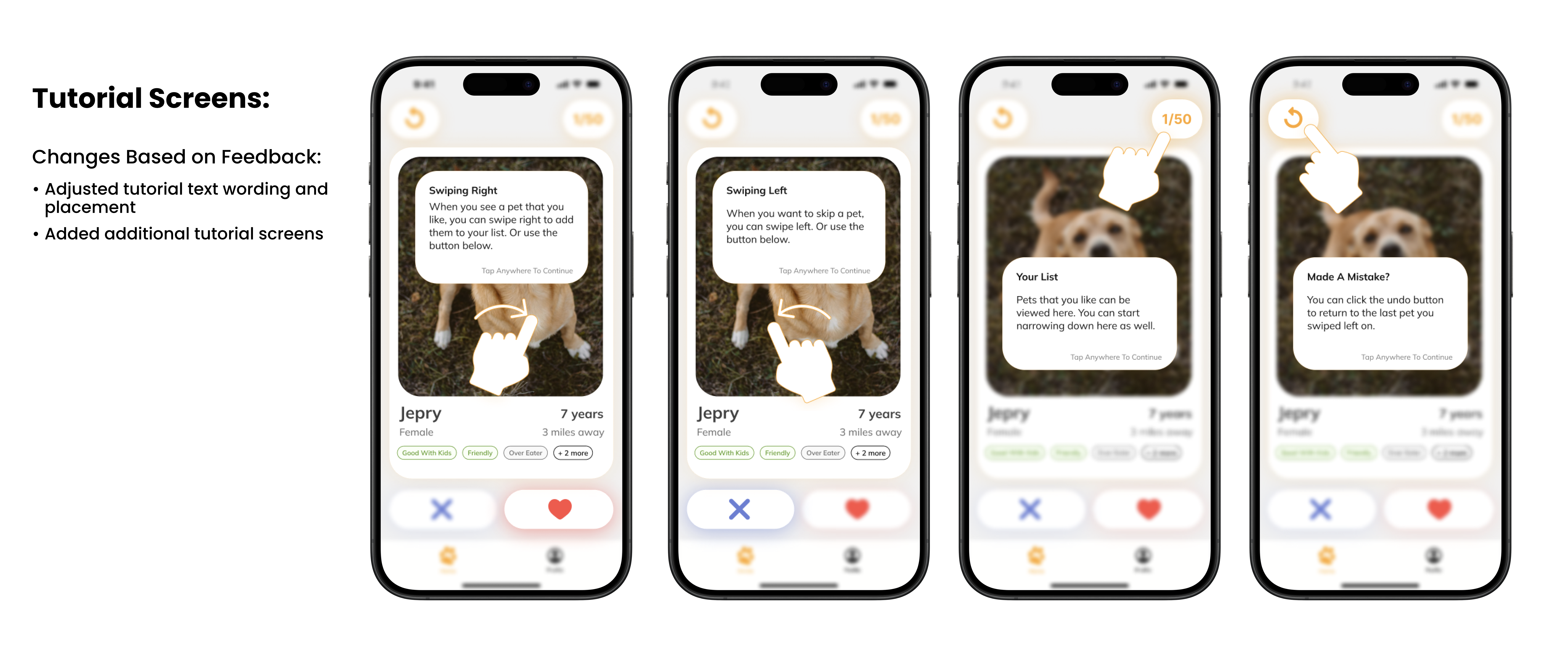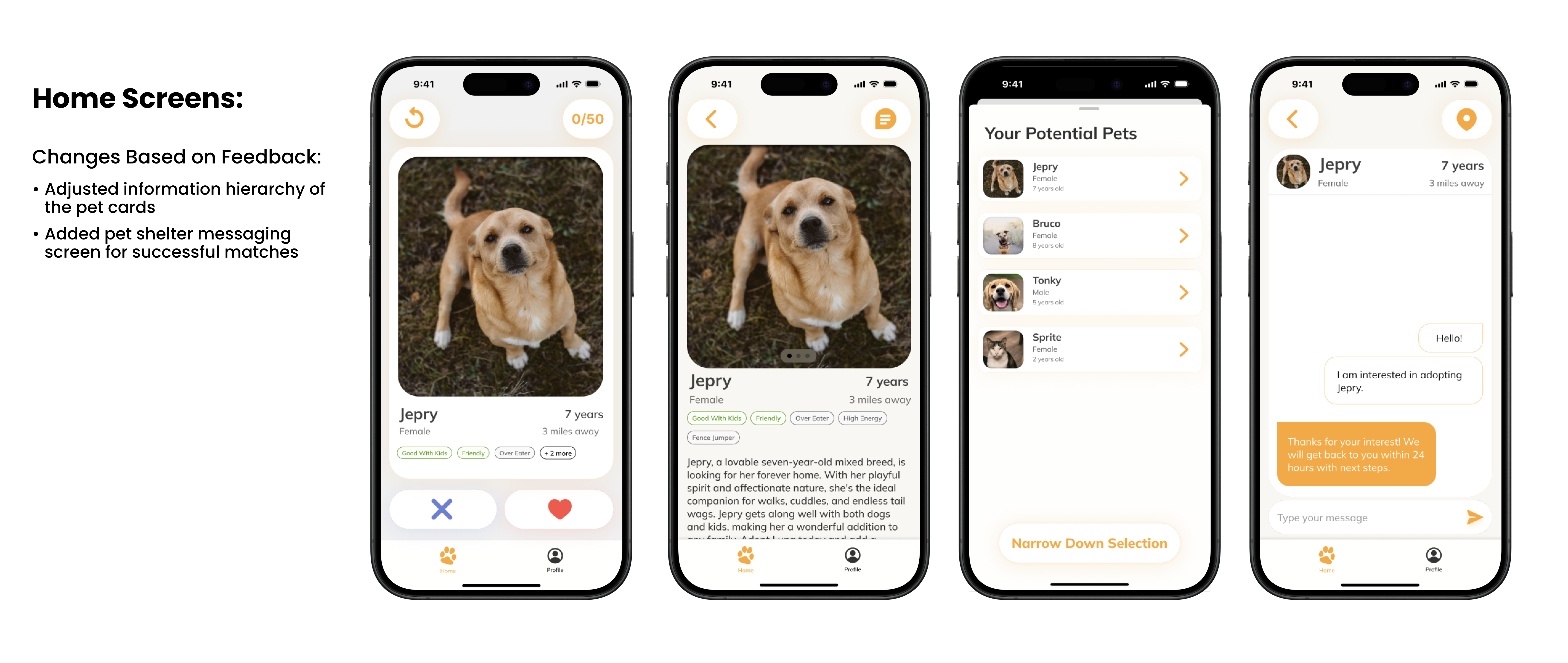Overview
🔍
The Scenario
Finding a pet is an extremely involved and time-consuming process, especially for young adult first-time pet adopters who are unfamiliar with the entire process. It involves numerous steps: from choosing your desired pet breed, learning about pet care, visiting shelters, aclimitzaing your pet... The list goes on.
⚠️
The Problem
How can we develop a solution that streamlines the pet adoption process, providing assistance to young, first-time, pet adopters?
💡
The Solution
First-time, young adult, pet adopters noted that although adoption agencies make use of technology, they are often poorly designed and not well implemented. As such, a dating-style application that utilizes familiar swiping gestures to select pets was designed - streamlining the pet selection process.
🎨 Figma Prototype
Details
🗓️ Timeline

🕵🏼♂️ Discovering the Problem Space
Analysis of Existing Systems
To start, an analysis was done of five common systems that exist for pet adoption - visiting/interacting with the service where possible.
- Traditional Shelters
- In-person shelter adoption involves potential adopters navigating through individual stalls to choose a pet, creating an environment for personal interaction and discovery. While this approach suits some, it can be overwhelming or discouraging for others because of the odors and loud noises.
- Adoption websites play an important role in the adoption process, displaying adoptable pets to adopters, allowing them to view these pets from anywhere they wish. However, potential adopters still need to go to a shelter to actually adopt the pet.
- While more informal, these adoption methods are often done among individuals with pre-existing connections. This ultimately fosters a heightened sense of trust between adopters and those giving away the pet, promoting increased transparency in understanding the pet's behavior.
Adoption Websites
Neighborhood Applications, Social Media Channels, & Word of Mouth
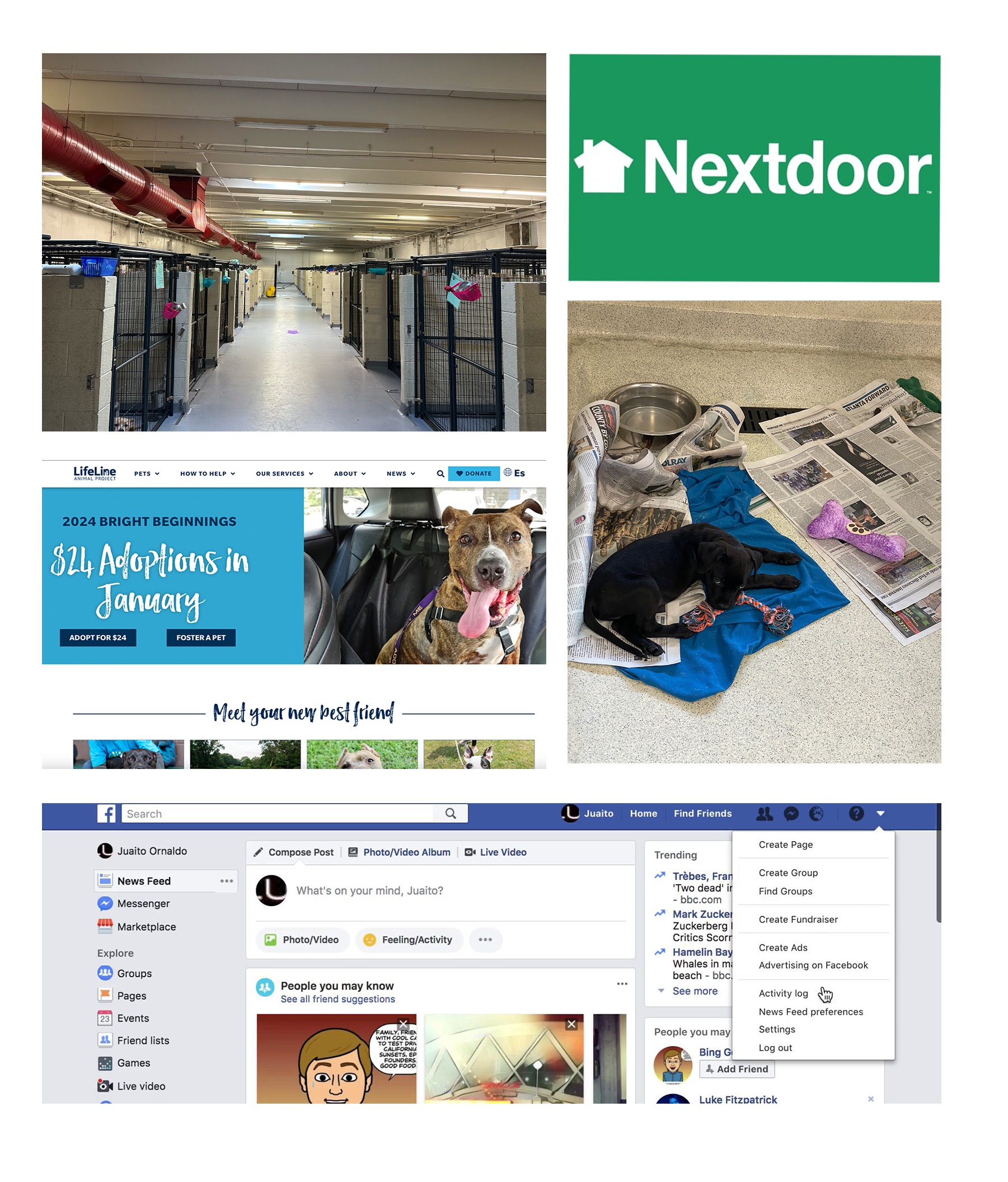
Target Users
Based on initial research into the topic space, for this project the team chose to focus on young adult, first-time pet adopters who, being unfamiliar with pet adoption, stand to benefit the most from an innovative and novel adoption solution. In addition, this group is often frustrated with existing adoption technologies and would greatly benefit from a more user-friendly, engaging platform designed to connect them seamlessly with the pets they desire.
Stakeholders
Through our research, we identified two primary stakeholders and three secondary stakeholders. This can be seen in the diagram below:
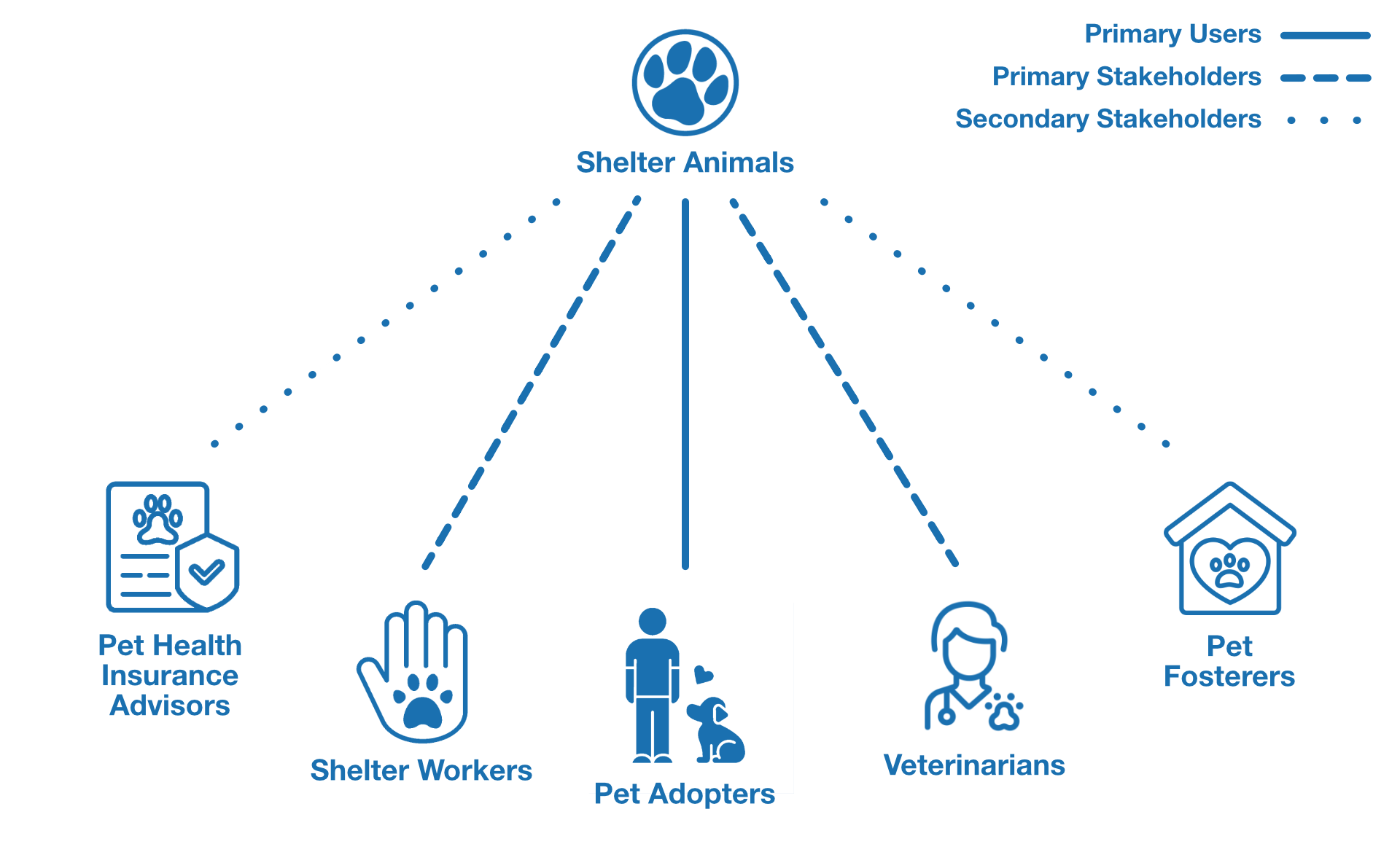
🎯 Requirements Gathering & Ideation
Having explored the topic space at hand, the team then moved on to exploring how we can address the issue of facilitating pet adoption - starting with semi-structured interviews of our target group.
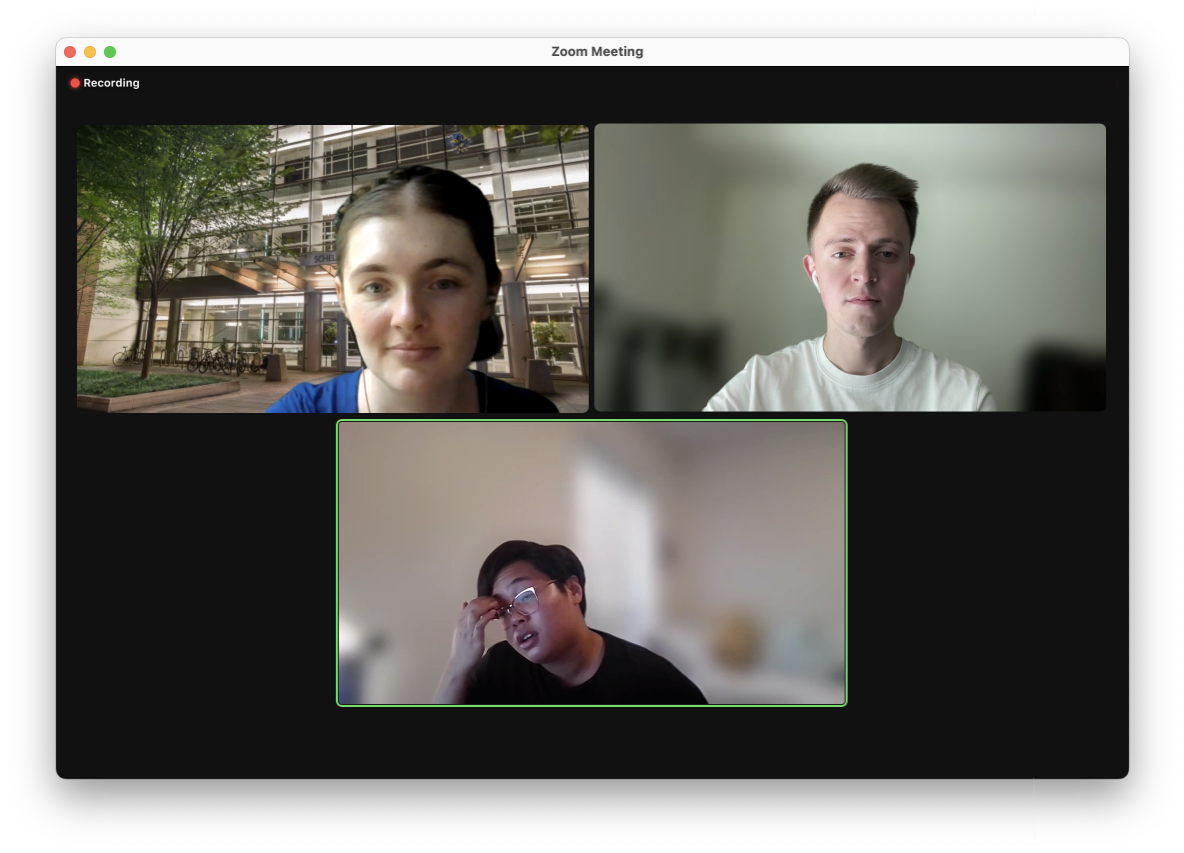
Semi-Structured Interviews
Our semi-structured interviews aimed to gather more qualitative data and dive deeper into some reasons and behaviors with young-adult adopters. While our target user group was first-time adopters, we chose to interview participants with varying levels of adoption experience in order to understand how the adoption process has changed over time. All interviews were then conducted over Zoom, giving our participants and us the most flexibility.
Findings
After all interviews were completed, we held an interpretation session and constructed an affinity map to consolidate and organize our data across multiple users and uncover important insights.
Key Takeaways
1
Young adults are fairly tech literate and felt let down by existing digital pet adoption solutions
2
First-time pet adopters have little, to no, experience with pet care
3
The primary motiviation for wanting a pet was either companionship or emotional support
4
Adopters had preset preferences for the type of pet they wanted, leading to unrealistic expectations for that pets role in their life
5
Most first-time adopters felt overwhlemed by the pet selection process and didn't know how to start
Hierarchical Task Analysis
Based on the main findings from our interviews, we created two hierarchical task analyses. This first task analysis represents how our target users currently select a pet to adopt, and the second task analysis represents how our target users currently go about finalizing the adoption process.
Design Requirements
As a result of our requirements-gathering activities, we defined six high-level design requirements to advise our future design decisions:
- Our design should not assume prior knowledge of pet adoption
- Our design should reflect how young adults interact with technology
- Our design should accommodate users with sensory issues
- Our design should be affordable for adopters and shelters
- Our design should have clear and accurate information about adoptable pets
- Our design should include a variety of pet species, rather than just a few.
Brainstorming & Ideation
After gathering and defining our requirements, we then engaged in “informed brainstorming” to explore the design space for our problem and develop design alternatives. To do this we went through a round of metaphorical thinking and crazy 8's. This ultimately resulted in a handful of different ideas and mockups, some of which can be seen below:
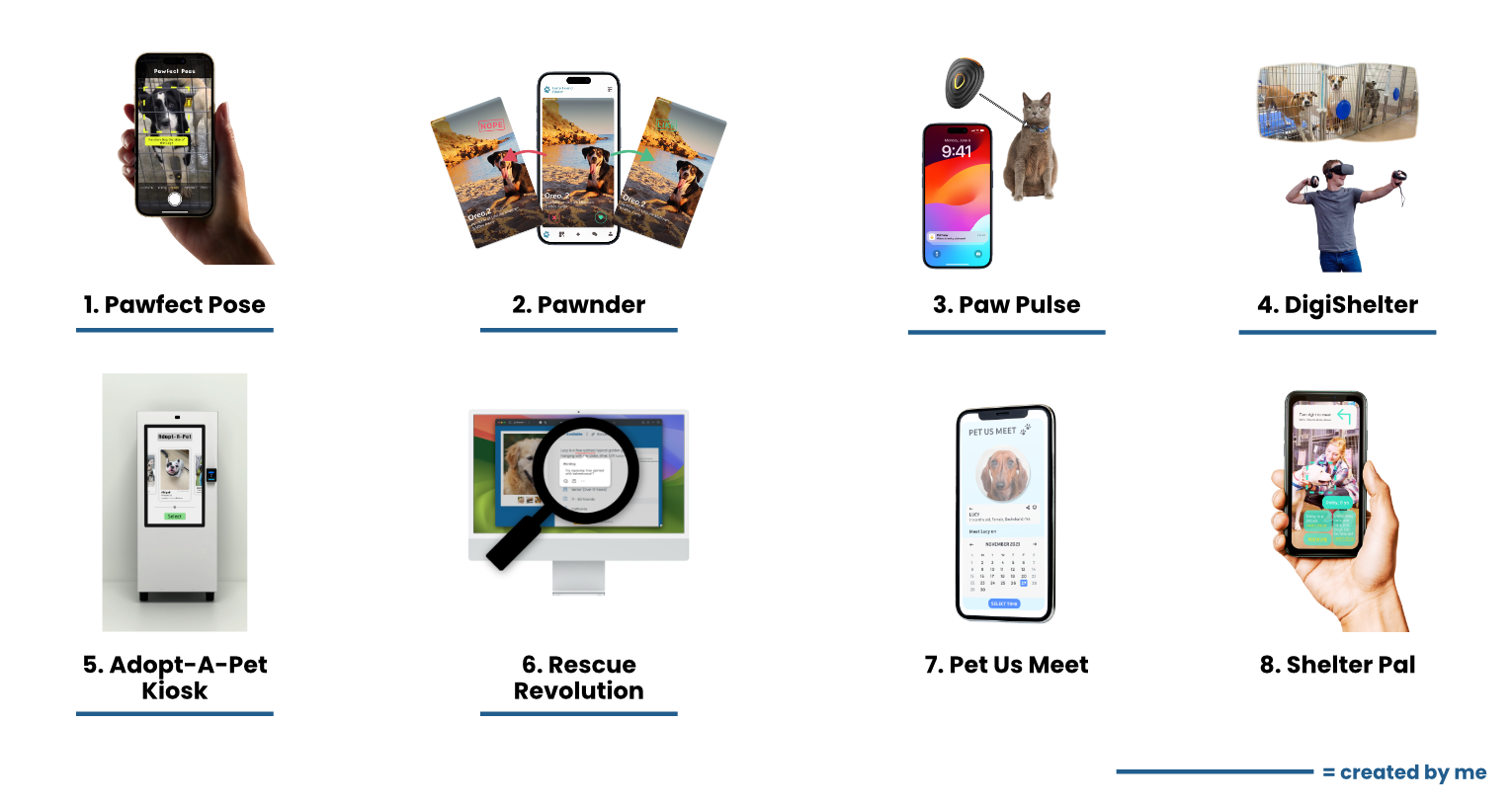
From all of this, we then ultimately chose Pawnder as our final idea and started to create our design prototype.
🛠️ Prototyping
Low-Fidelity Wireframes
Using Figma, we started by developing a series of low-fidelity wireframes for the application.
Design Language
Thereafter, we created a design language for the applications high-fidelity wireframes - ensuring it was playful and matched the intended aesthetic of Pawnder.
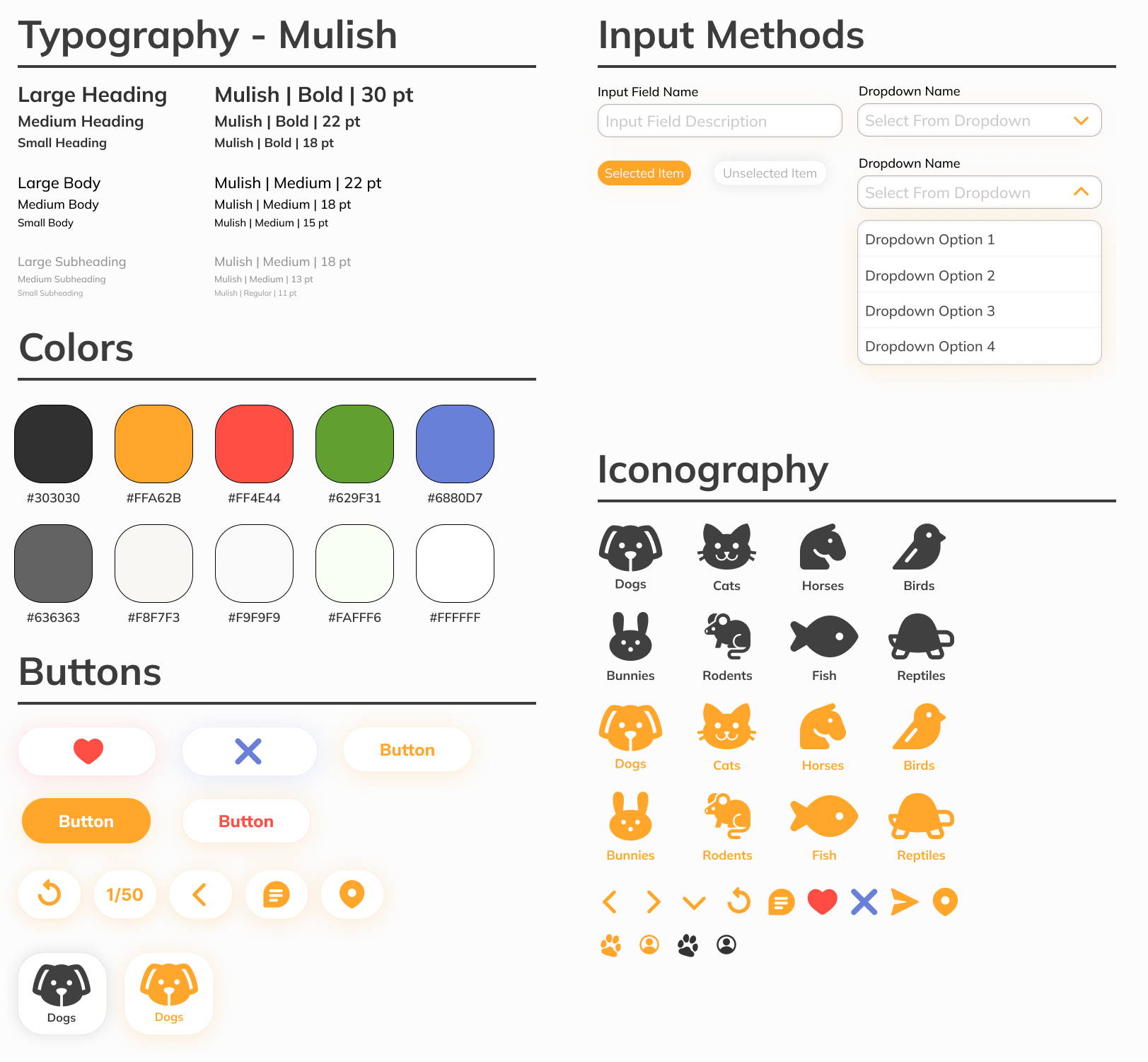
High-Fidelity Wireframes
Finally, we then used the low-fidelity wireframes, along with various feedback sessions to develop a set of high-fidelity wireframes and prototype (seen in the project overview). As the lead UX designer for the project, most of the high-fidelity wireframes were designed and created by me.
✅ Evaluation & Final Suggestions
Evaluation Plan
Due to the time constraints of this project, we conducted a discount evaluation of our prototype with other students in the MS-HCI program. We developed a plan to support two evaluation goals, linking directly to two of our most crucial design requirements:
- Our design should not assume prior knowledge of pet adoption
- Our design should reflect how young adults interact with technology
Method Details
To provide a comprehensive evaluation of our system while still working within our time constraints, we elected to perform a combination of surveys and usability tests for Pawnder. These were perfromed as follows:

